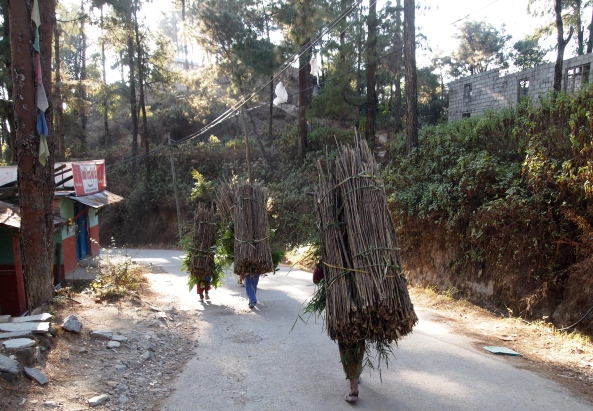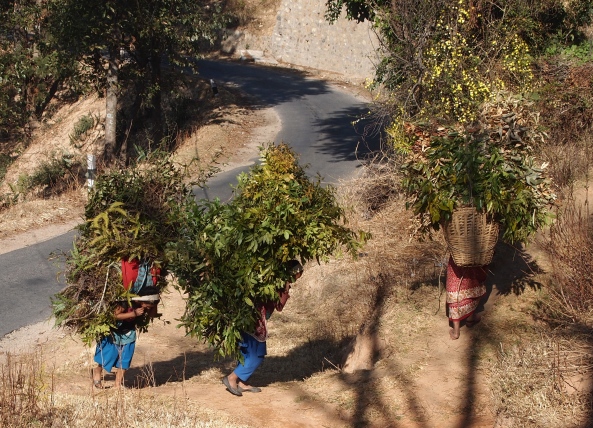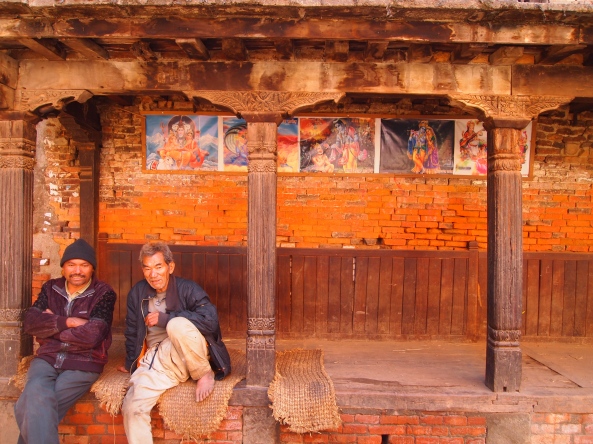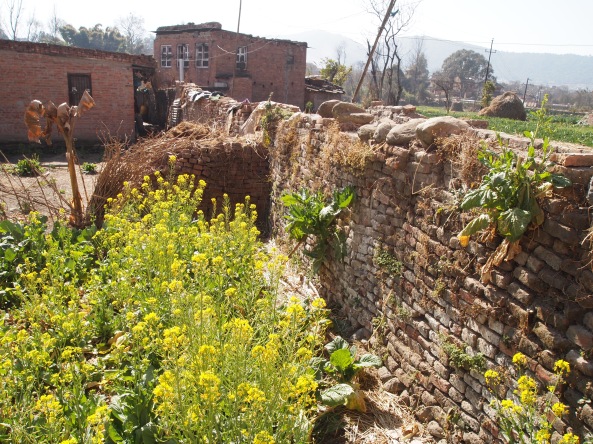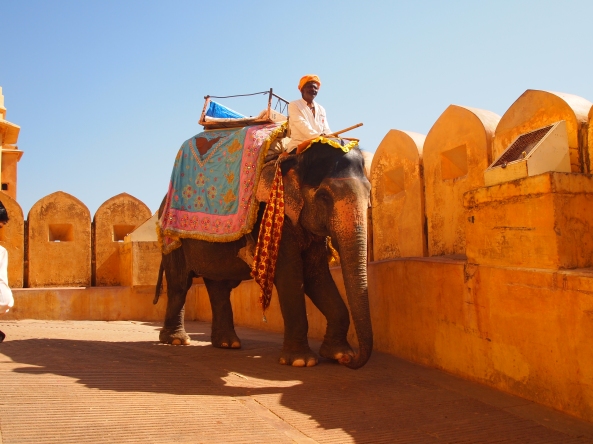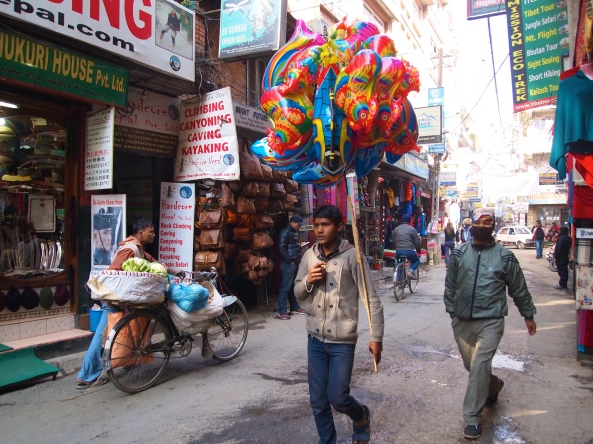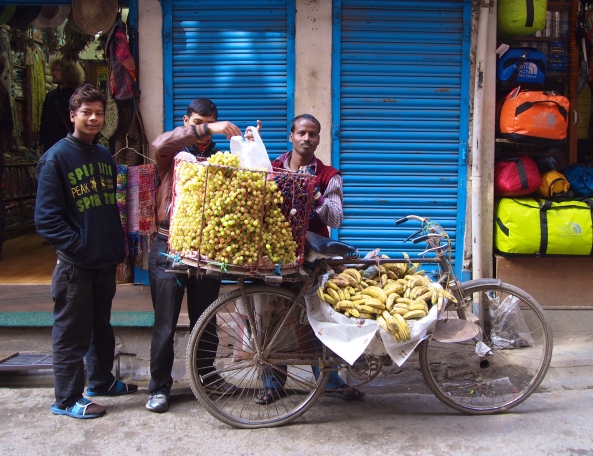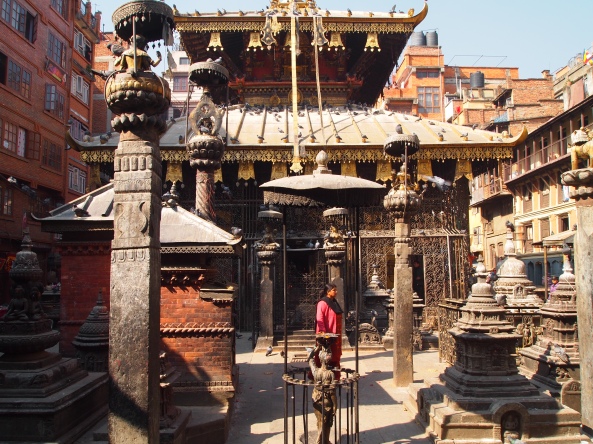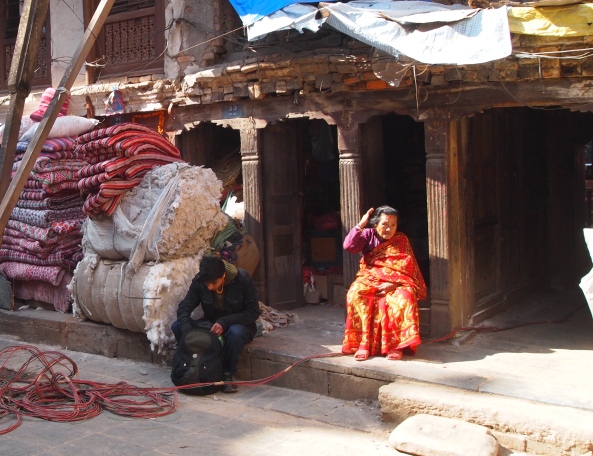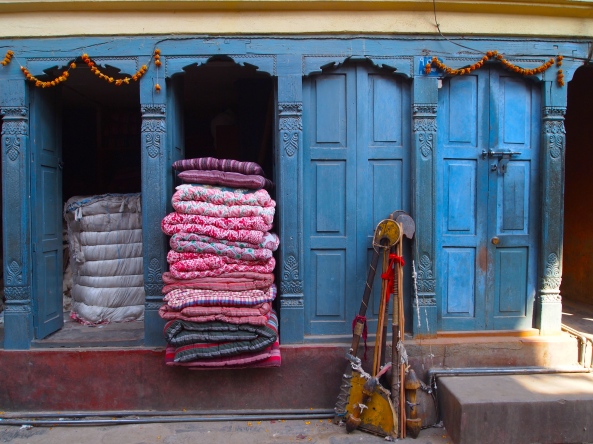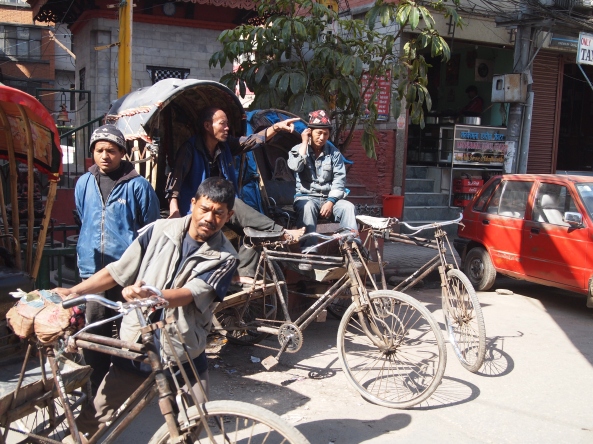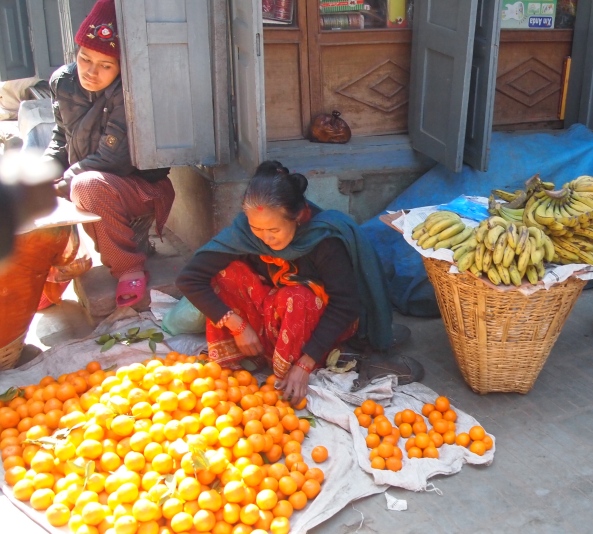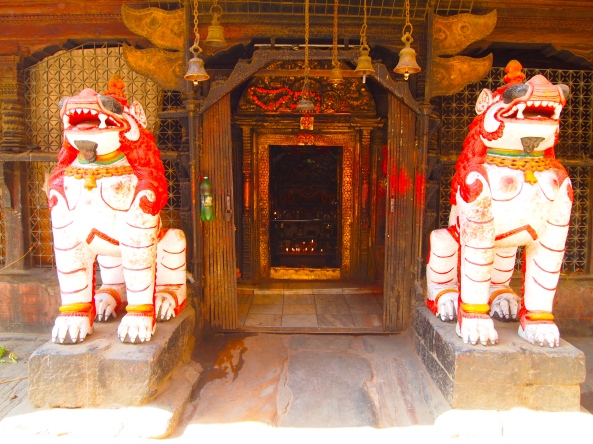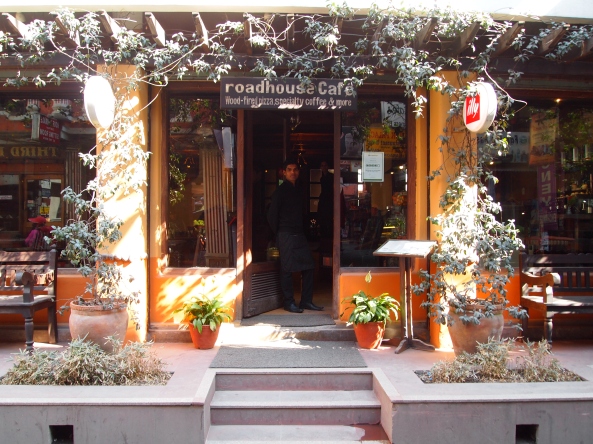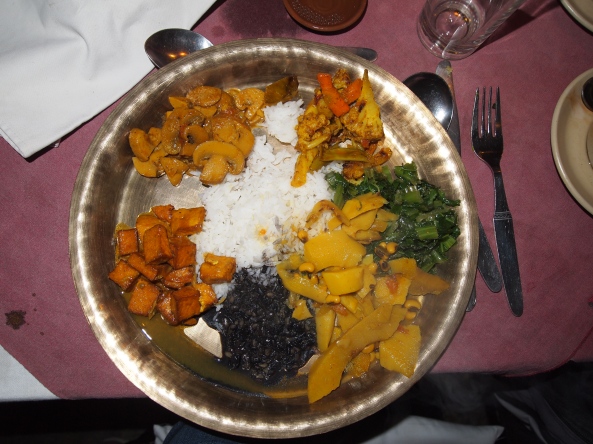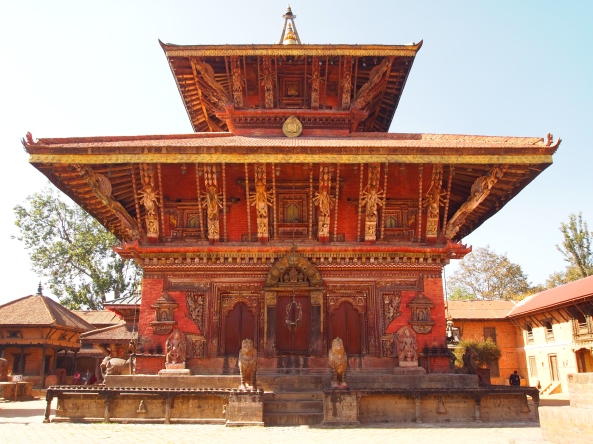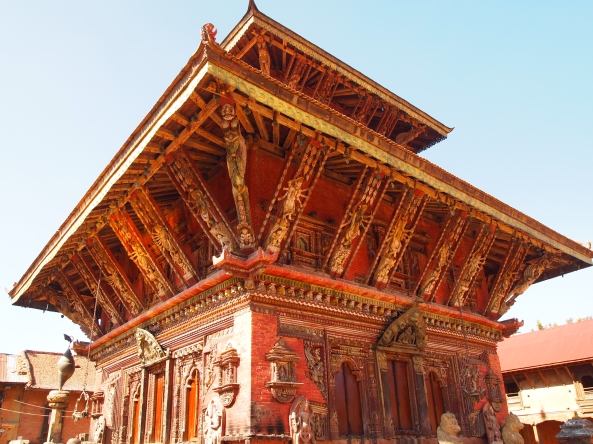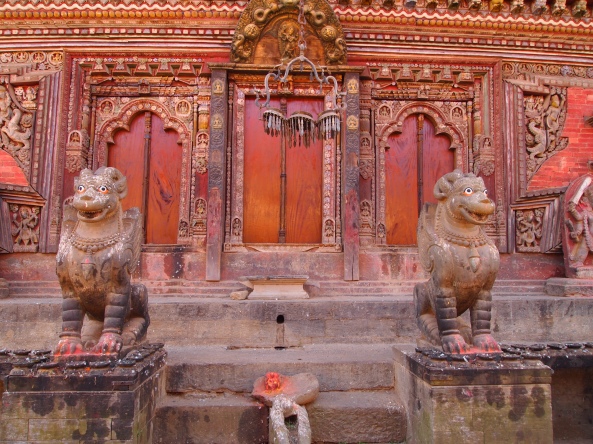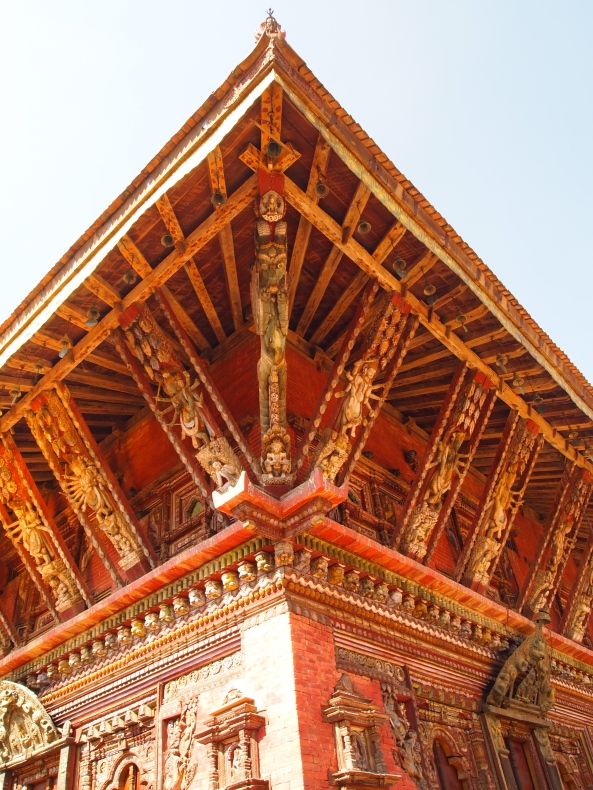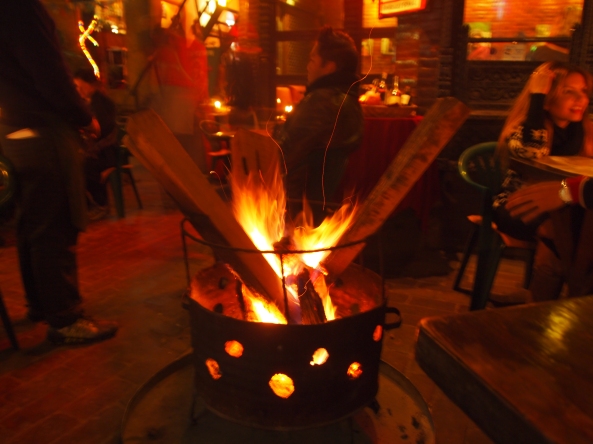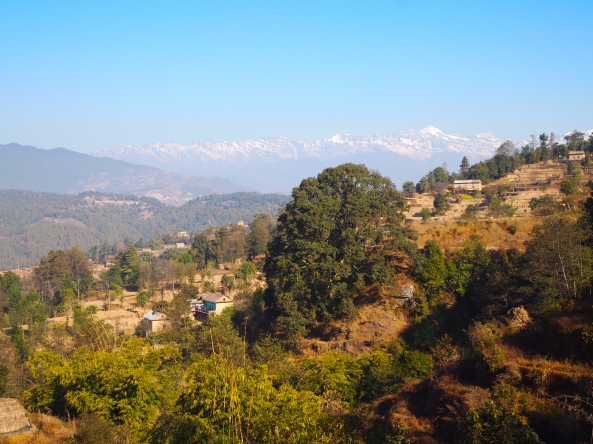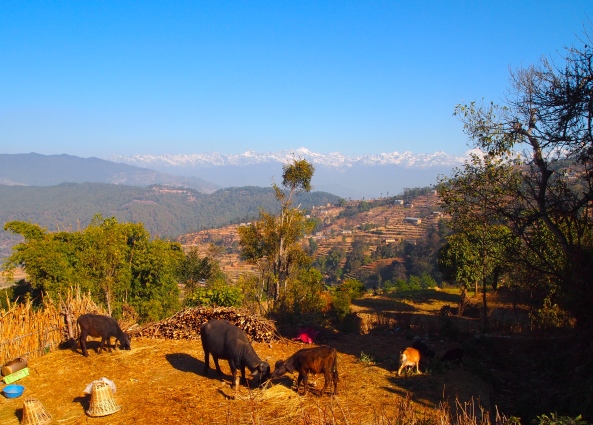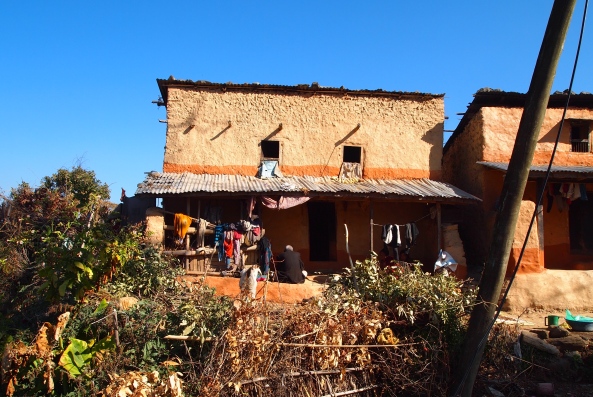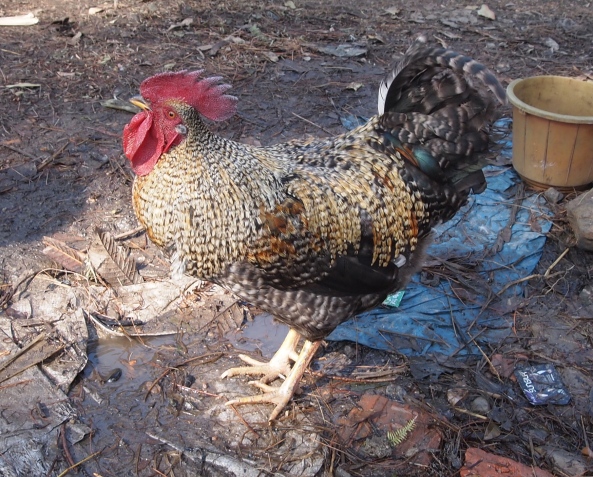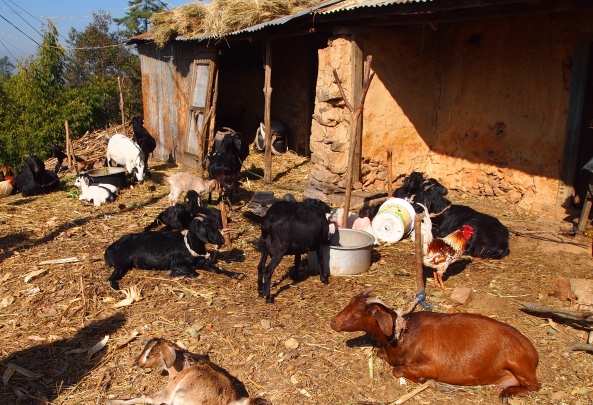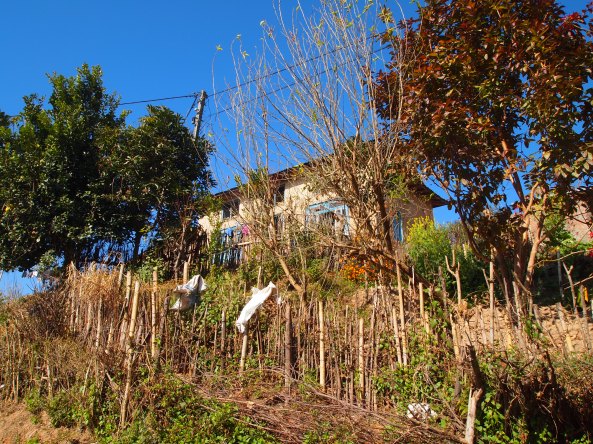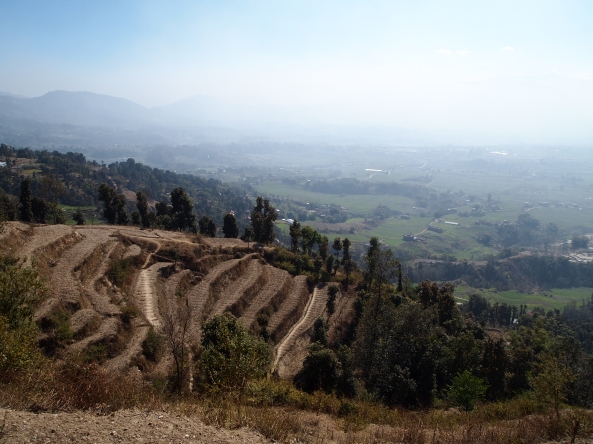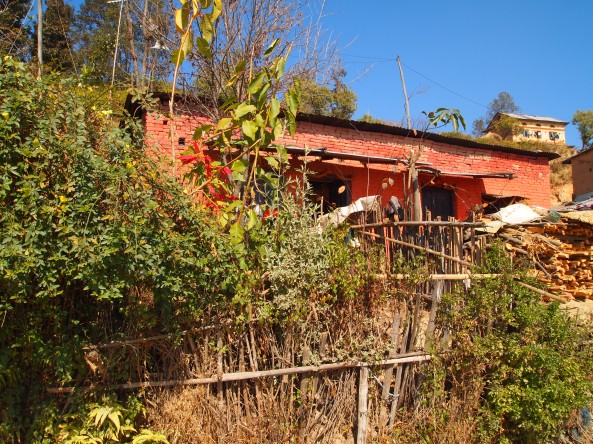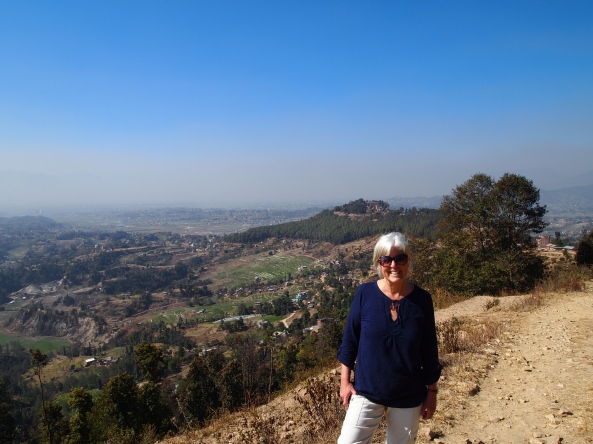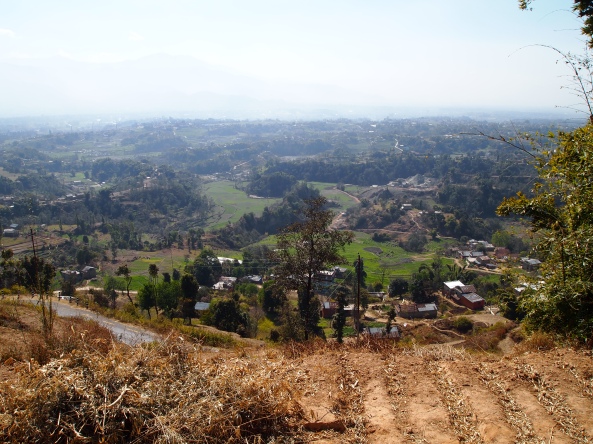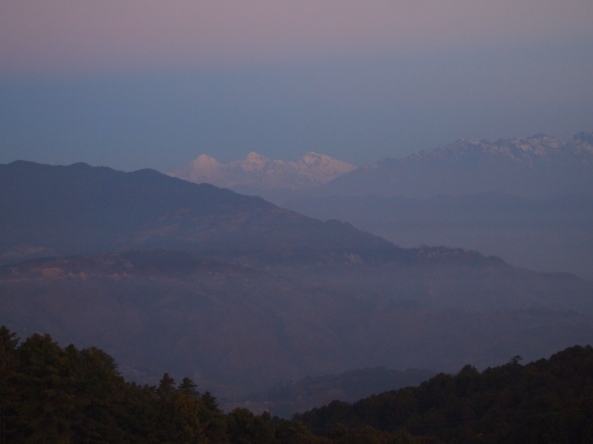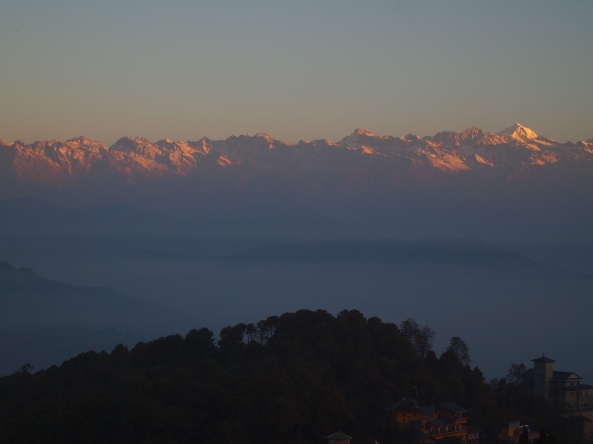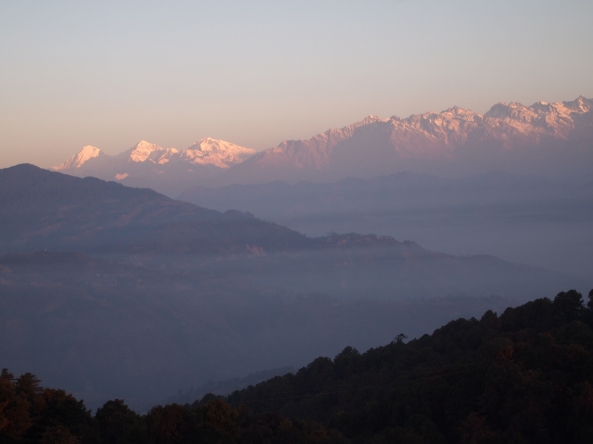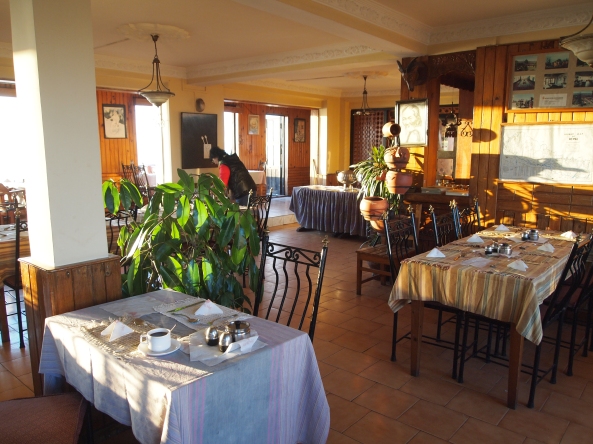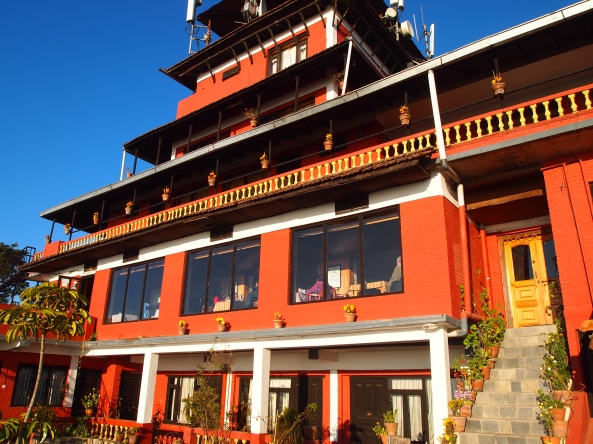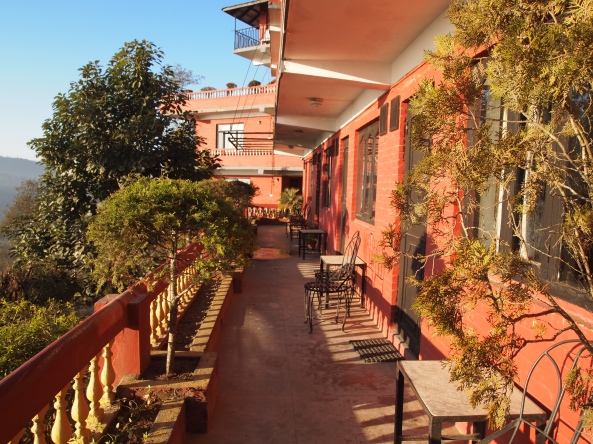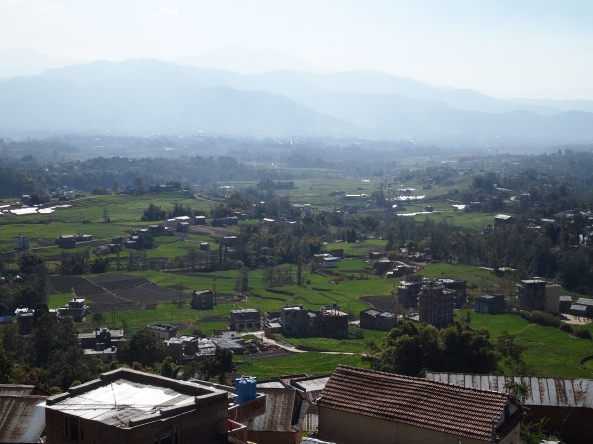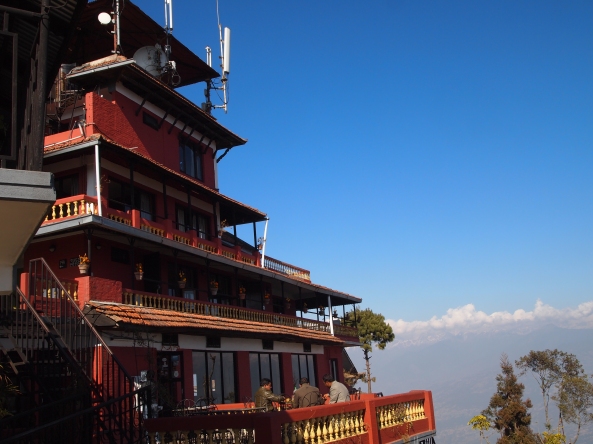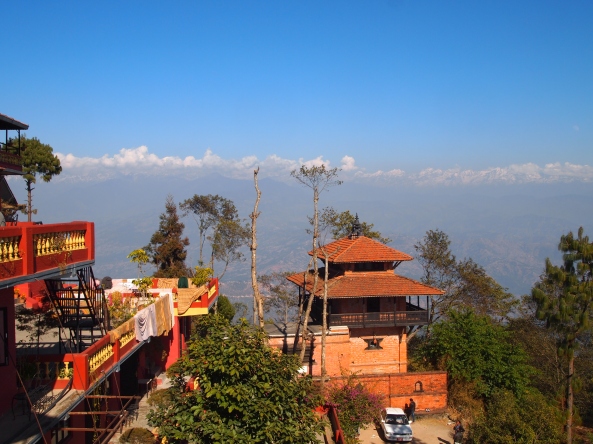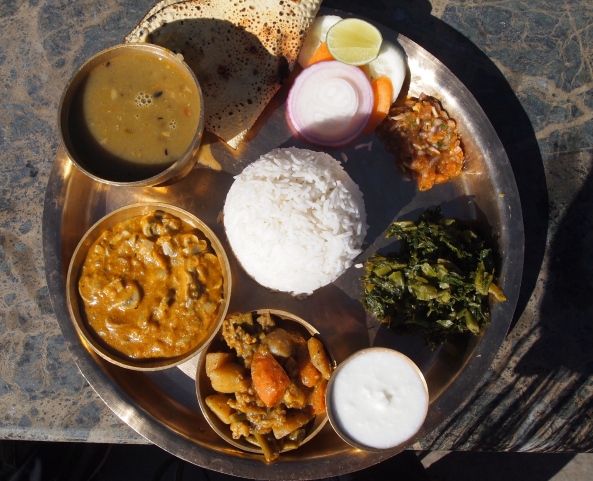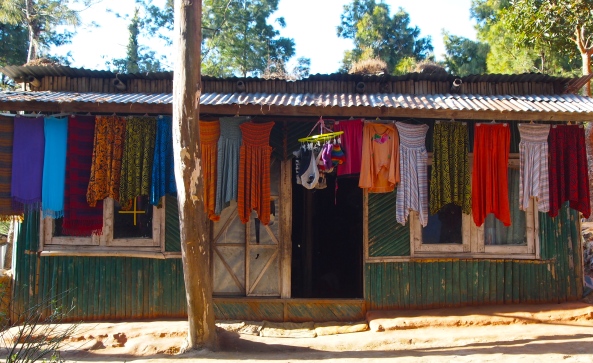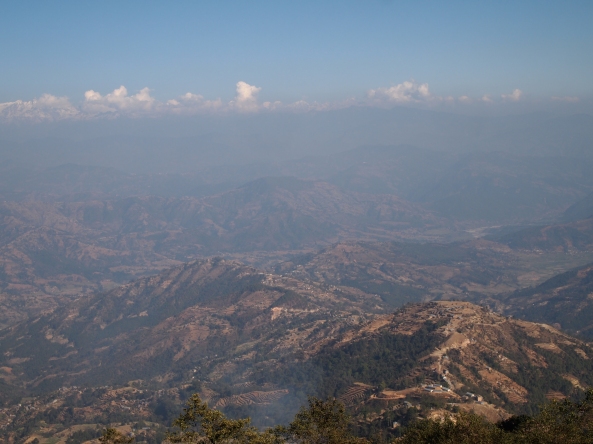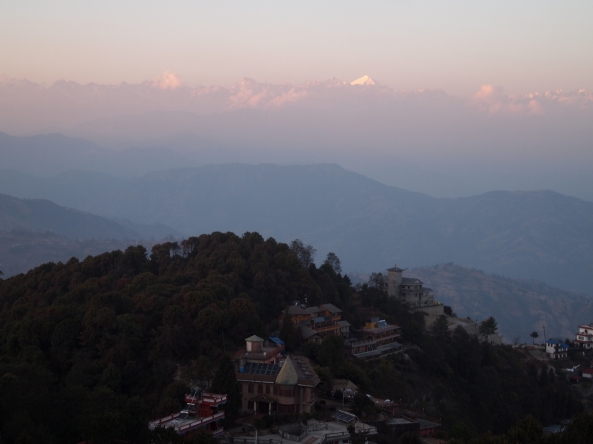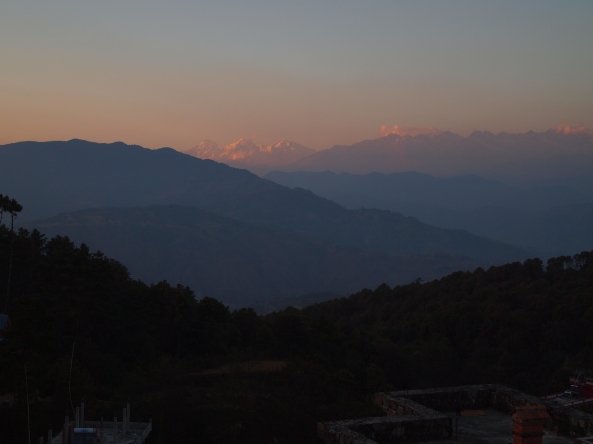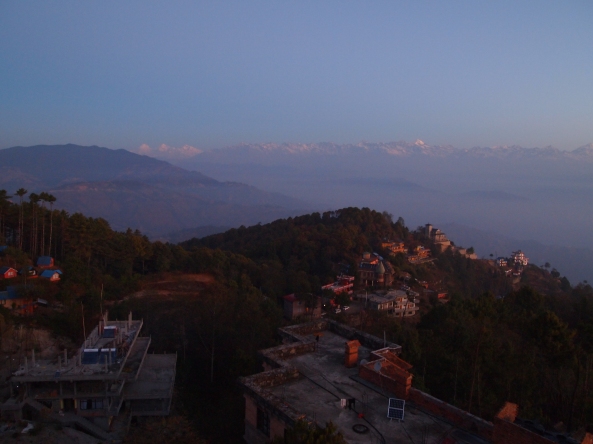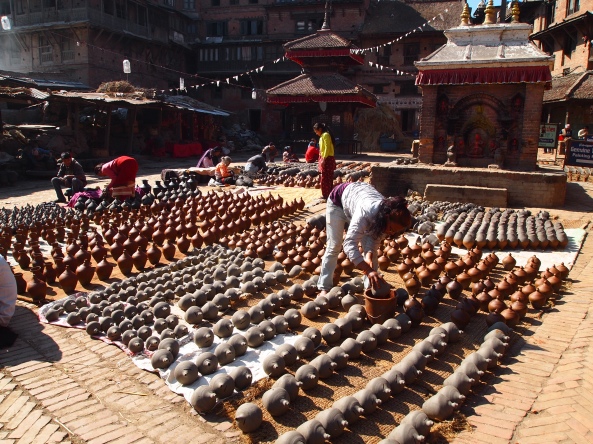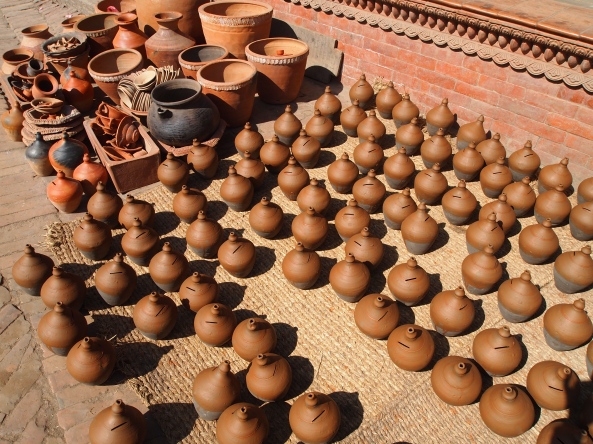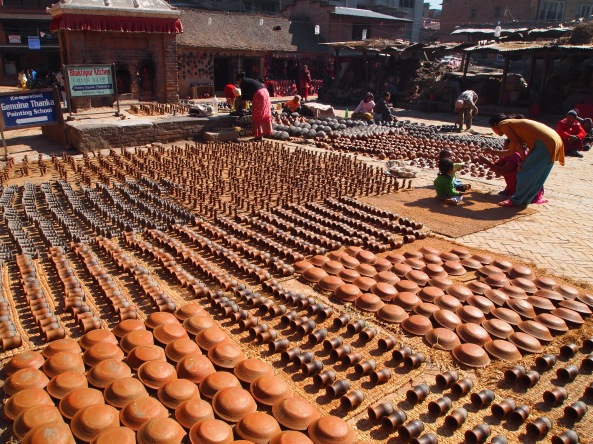Sunday, March 3: New Nepal, New Voices is an anthology of short stories by Nepali writers writing in English. The stories capture bits of life in Nepal, whether the writers are based in Kathmandu, California or China. The editors, Sushma Joshi and Aji Baral put together this collection to show the writers’ “shared experience and relationship with Nepal.”
I enjoyed most of the stories in this collection, except for a few. One of my favorites was “Law and Order” by Sushma Joshi. The main character, Bishnu, had tried 6 months earlier to get into the British Gorka army, but despite spending three years in preparation, he had been rejected when he failed a final test where he was thrown from a horse. Dejected, he ends up applying for the Police Force of Nepal, and gets accepted. However, it’s a difficult existence with low pay and small food rations and he finds himself continually hungry. He spends all his time longingly looking out the window of his Police Headquarters cell at the house next door’s bountiful garden. In addition to the garden, the house is also occupied by several beautiful young women. Bishnu and his three roommates focus all their attention on the food growing in that garden and the beautiful girls. Finally, he makes up his mind that he will scale the wall and raid his neighbor’s garden. The house has a dog in residence and the gate around the house is embedded with broken glass to keep out intruders. None of this deters him because he’s so hungry and he has to look at, and long for, that garden every day.
He manages to scale the wall and fills a plastic bag full of vegetables from the garden. On his expedition, he cuts his hands on the embedded glass and sits on a spike on the gate, drawing blood from his private parts but luckily not causing permanent damage. On this night, the dog happens to be locked up; however that doesn’t keep the dog’s loud barks from terrifying him. When he gets back to the cell safely with all his bounty, one of his roommates tells Bishnu he missed seeing one of the girls taking off her clothes one piece at a time, as if she knew they were watching. Bishnu thinks the roommates are just jealous because of his exciting adventure.
Over the next several days, he shares his plunder with his roommates in delicious meals. Then, when all the vegetables are gone, he realizes he will have to go back to looking at that garden and dreaming about it. He tells his roommate: “J.B., I realize it now. The hunger of your stomach you can always satisfy with cauliflower and a tomato, but what about the hunger of your mind?”
His roommate responds: “Only an idiot would try to satisfy the hunger of his mind.”
As Bishnu drops off to sleep, he becomes aware that “his mind would always be roving over unreachable landscapes of desire, leaping from luscious fruits to beautiful breasts…. and there was nothing he could do to satisfy them all. They would always remain half dreamt, half imagined, half seen, half felt.” He wonders if sleep is the only place where desires of the mind can be satisfied. “Or perhaps, he thought confusedly just before he fell into a deep sleep, his mind was the only place where women could mutate to the fullness of a fruit, and the pungent ripeness of summer juices, and move from human to plant and back again with no discernible boundaries, and all of this was just as real as the long, mournful howling of that damned dog outside.”
I love the way Susha Joshi explores the nature of desire and ties together Bishnu’s dreams of women and of fruit. This kind of story is why I love to read wonderfully imagined fiction. We all can relate to the experience of having unfulfilled desires and when a wonderfully creative writer like Joshi uses his imagination and his talent with words to create such a character as Bishnu, we can’t help but feel a sadness for our own frustrated yearnings and desires.
In another story, “The Face of Carolynn Flint” by Prawin Adhikari, an expat Nepali living in California has an affair with an older woman named Carolynn who is continually reinventing her face through plastic surgery. The story of this affair, which is very superficial, is intertwined with the story of Heather, a girl who the narrator truly loved and who had beautiful eyes: “Her eyes did change colours constantly: sometimes the paleness of a late summer sky, and sometimes the blue-green of bits of glass found on the beach, but nevertheless, something glassy and oceanic about them remained.” The only reason he gets involved with Carolynn is because her eyes remind the narrator of Heather.
In the end, both relationships come to an end, and the narrator says: “If I had to say what I have learned from life so far, I wouldn’t be able to write a single word of truth: I’d likely ramble on and on, but never manage to say anything of substance. I don’t think I have learned anything about people, much less about women, or love. I still remember how hard it was to say goodbye to Carolynn, the woman of a thousand faces, the woman I never loved, and I remember how easily everything ended with Heather, whom I did love, with however much of it I could muster.”
Sadly, I think I might have to say the same thing. We want so desperately to learn lessons from our life experiences, to carry away some knowledge from our pain and sorrow and heartbreak. Yet. It’s often difficult to say exactly what we did learn, if anything. Many times we think we’ve learned something, and then we continue to repeat the same patterns, the same mistakes. All we can hope is that we can take away a small grain of wisdom from each experience, even if a minuscule one, and that it will make some difference in our lives.

